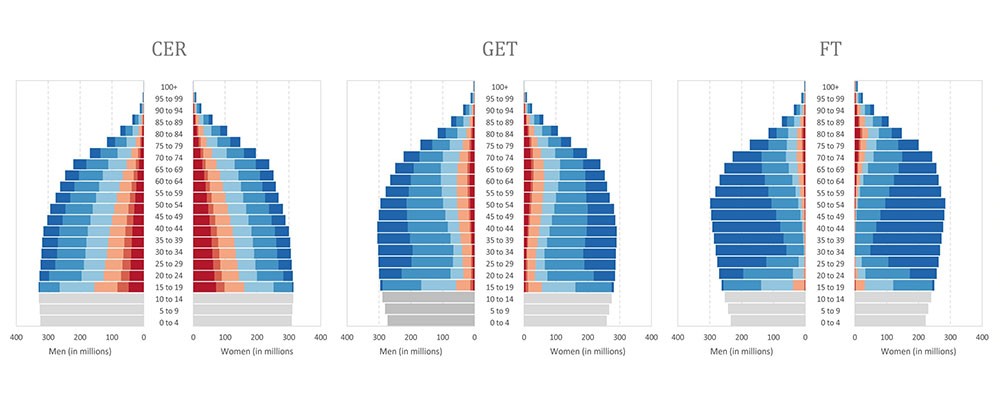Human Capital Modelling

The Wittgenstein Centre’s focus in the area of “Human Capital Modelling” clearly is on the integration of education and population. This is expressed in the claim that education has to be added by default as the third major determinant of demographic change next to age and sex in the context of population projections. Women with higher education almost universally have fewer children, education is associated with better health and lower mortality, as well as differences in migration patterns. Hence, our picture of the future World greatly depends on further progress being made in the area of education, particularly of women in today’s high fertility contexts. Methodologically, existing tools of multi-state cohort-component analysis can be applied to achieve this integration and thus add the “quality dimension” to our assessment of what the future will look like. Currently, we are focusing on how the interaction between personal characteristics represented by age, sex, and educational attainment and the spatial location represented by rural/urban place of residence and sub-regions within a country impacts future population dynamics. We are developing an open-source software in R to provide the methodology easily available to the end-users.
Key concepts
Analysis of important sources of population heterogeneity (human capital and spatial) on population dynamics (total population), population ageing (in Europe) and in other settings e.g. on fertility in sub-Saharan Africa
The Wittgenstein Centre aspires to be a world leader in the advancement of demographic methods and their application to the analysis of human capital and population dynamics. In assessing the effects of these forces on long-term human well-being, we combine scientific excellence in a multidisciplinary context with relevance to a global audience. It is a collaboration among the Austrian Academy of Sciences (ÖAW), the International Institute for Applied Systems Analysis (IIASA) and the University of Vienna.
